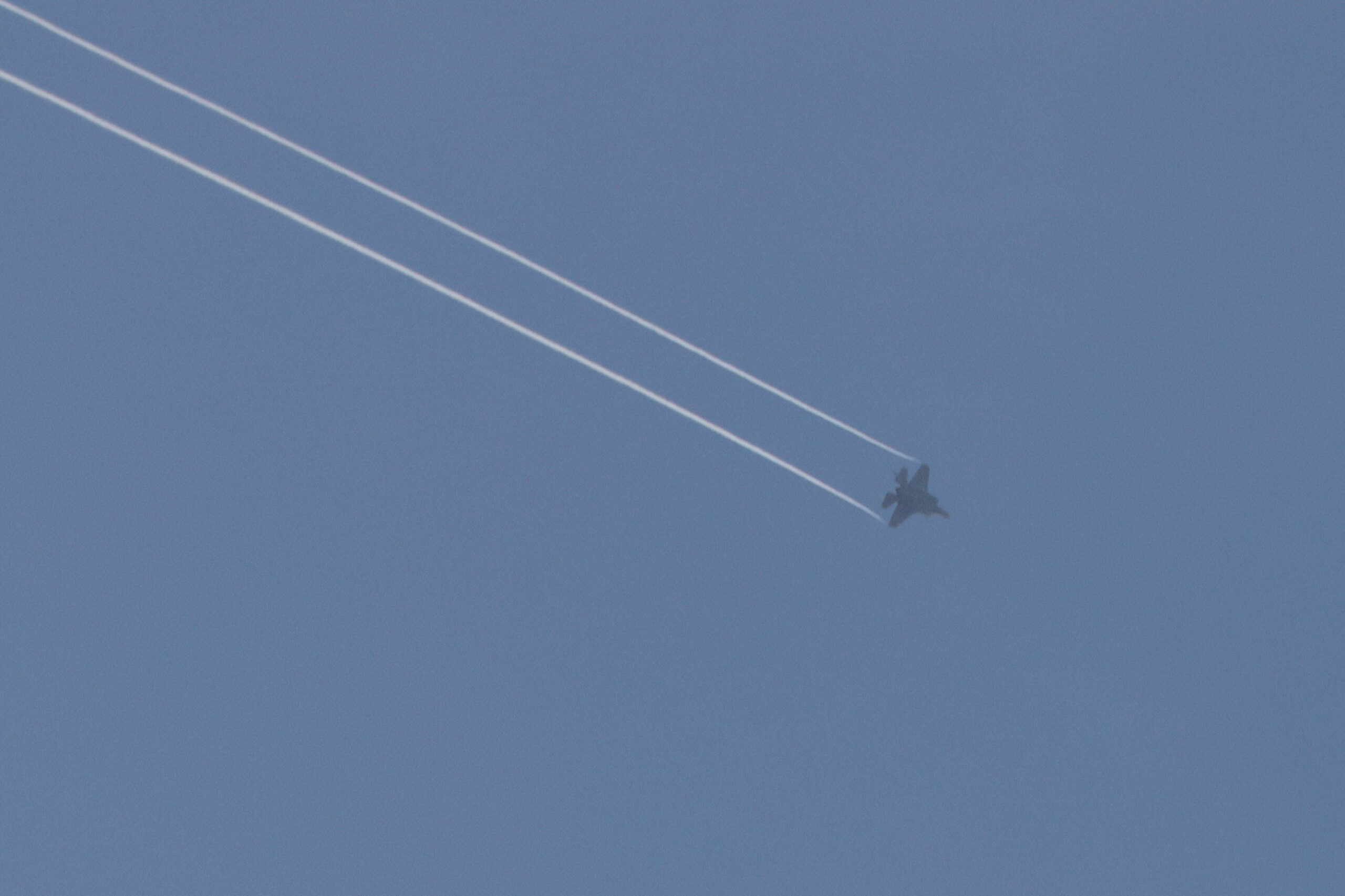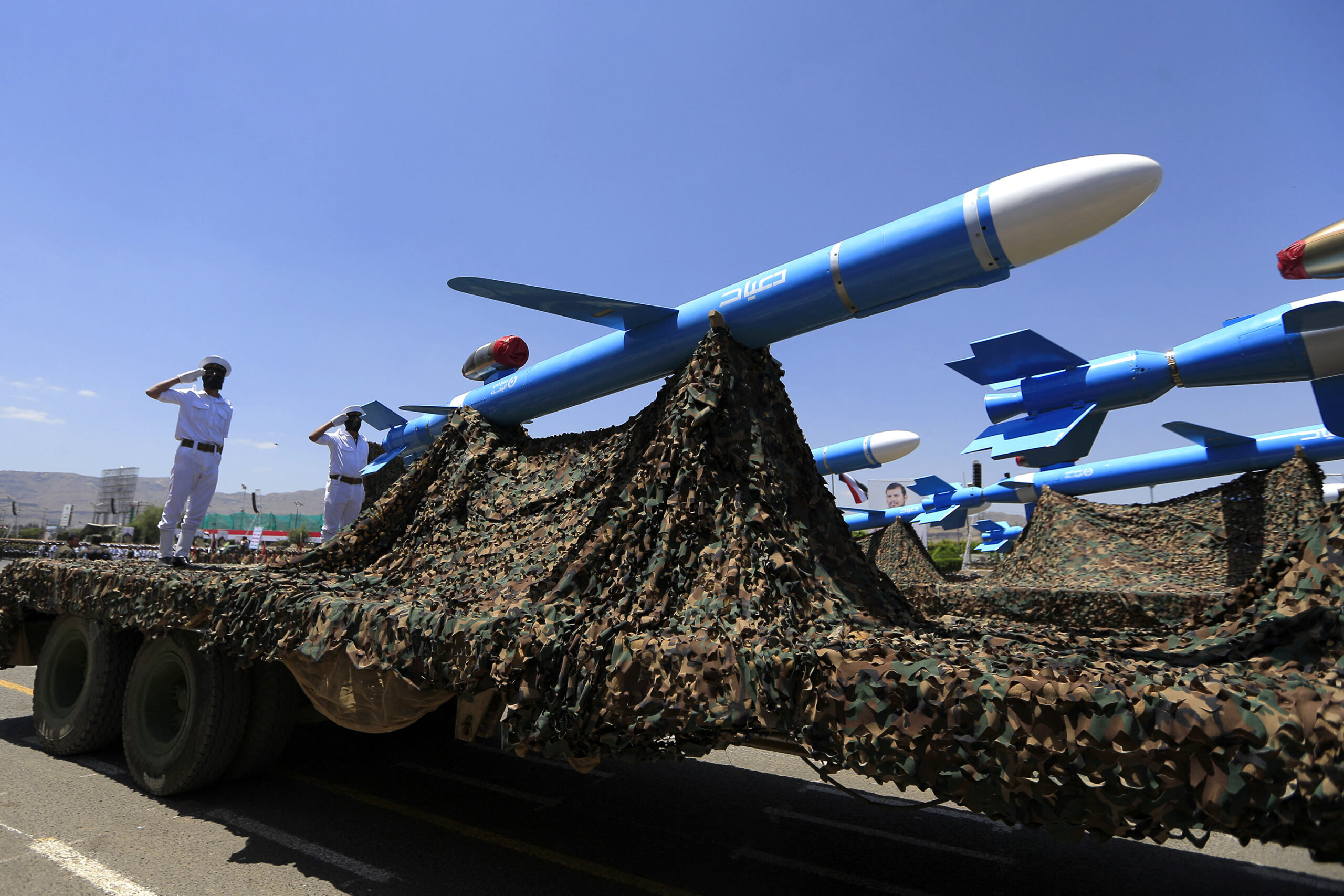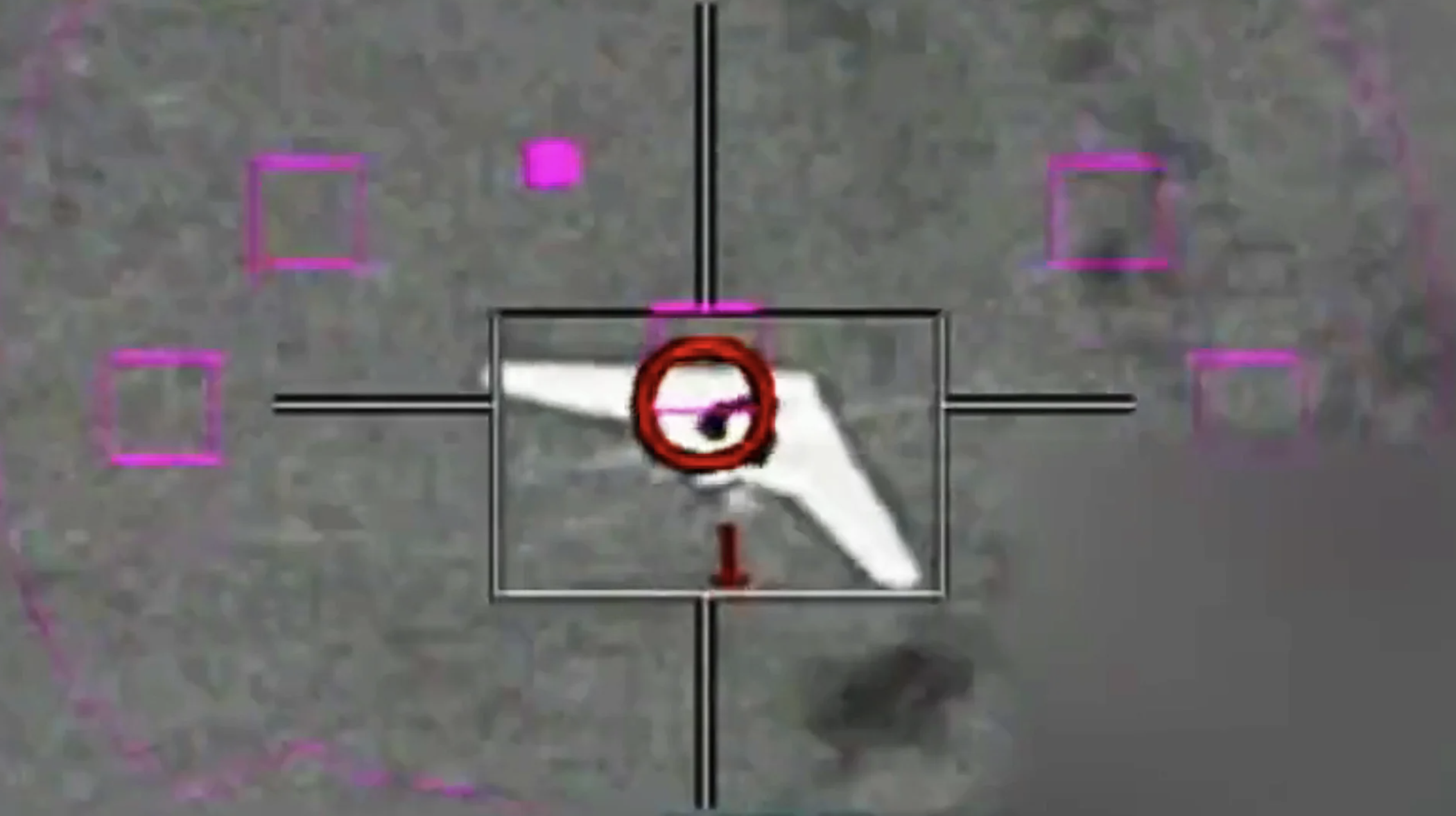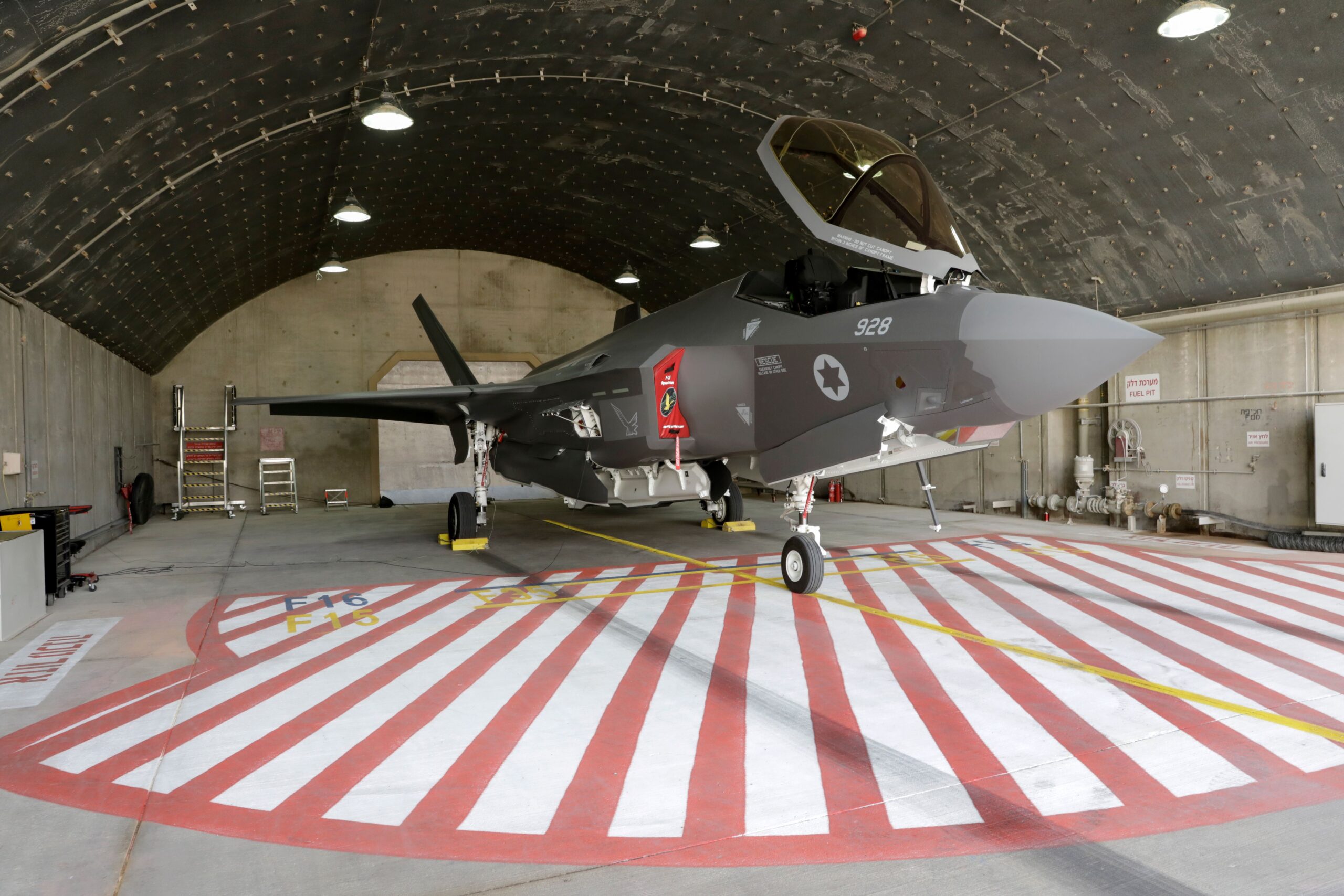Israel has acknowledged that its fleet of F-35I stealth fighters is playing an active role in the current Gaza conflict, with the announcement today that these jets were recently used to intercept and bring down a cruise missile. As well as verifying that these advanced aircraft are engaged in the fighting, this is also the first confirmation that an F-35I has been used to bring down a target of this kind.
In the above post to X, formerly known as Twitter, today, the Israeli Air Force said:
“In recent days, a cruise missile launched from the southeast toward the airspace of the State of Israel was detected by the control and detection systems of the Air Force. The systems followed the trajectory of the cruise missile and launched fighter jets from the Adir formation, which successfully intercepted it.”
Adir is the Israeli Air Force name for the F-35I, roughly translated as “Mighty” or “Mighty one.”

A brief video accompanying the tweet shows footage apparently gathered from an F-35I’s helmet-mounted display (or perhaps from its Electro-Optical Targeting System), clearly showing a jet-propelled winged cruise missile in the crosshairs. The moment of launch of what is almost certainly an AIM-9X Sidewinder infrared-guided missile can be seen, with what appears to be a shower of sparks and debris coming close into the frame as the missile leaves the wing. That weapon then makes a hard left turn before impacting the target. This looks to be a good example of the AIM-9X’s high off-boresight engagement capabilities.
The Israel Defense Forces (IDF) stated that the F-35I’s cruise missile kill was followed later the same day by the destruction of a surface-to-surface missile over the Red Sea by the Arrow anti-ballistic missile system (known as Hetz in IDF terminology).
“From the north to the south, the IAF and its air defense array are deployed to provide multi-dimensional defense and provide additional layers of protection against a multitude of threats to the State of Israel,” the IDF said. You can read our full analysis of the Israeli air defense network in this previous article.

As to the F-35I’s intercept, no details have so far been provided about the exact time and location this happened, or the precise origin of the cruise missile itself. However, the claim that the missile was “launched from the southeast” toward Israel points with near certainty to the reality that it was launched by the Iranian-backed Houthi militants in Yemen. The Times of Israel also concludes that the missile was fired by the Houthis, noting that the IDF “has intercepted several other targets — apparently drones launched from Yemen — over the Red Sea in recent days.”
It has also been noted that the cruise missile in question looks very similar to the Quds series of weapons used by the Houthis. For their part, the Houthis have also released video footage that they say shows cruise missiles and drones being launched against targets in Israel as retaliation over ongoing Israeli operations targeting groups in the Gaza Strip.

If this is the case, the missile could have flown from the Houthi-controlled west of Yemen, over the Red Sea, toward Eilat, Israel’s southernmost city. Alternatively, the missile could have overflown Saudi Arabia, though that raises the question of why it was not intercepted there. Saudi Arabia has extensive experience in countering Houthi missiles and drones, including using its fighters to shoot them down.
A Royal Saudi Air Force F-15 shoots down a Houthi drone:

Saudi Arabia has also been involved in intercepting Houthi missiles and drones during the latest Gaza fighting. On October 19, the Houthis launched at least four cruise missiles and nearly 20 drones that were intercepted by the Arleigh Burke class guided-missile destroyer USS Carney in a nine-hour engagement. Saudi Arabia also engaged aerial targets during this incident and it may have intercepted others.
It’s interesting to note, too, that photos have recently been circulating on social media purporting to show wreckage from a Houthi Quds-type cruise missile, or similar, in Jordan.
At the same time, there was a notable spike in U.S. Air Force tanker activity over Saudi Arabia and the Red Sea last night, with flight-tracking data showing a significant number of flights by KC-135 Stratotankers out of their base at Al Udeid in Qatar. While unconfirmed, it’s possible that these refueling tracks were related to Houthi missile or drone activities.
So far, the Israeli Air Force has provided plenty of evidence of its F-15 and F-16 fighters playing an active role in the current Gaza conflict, mainly dropping air-to-ground munitions, both guided and unguided. AH-64 attack helicopters and various drones, including armed ones, have also been participating in the fighting. Until now, however, there was no official confirmation that the F-35I was involved.
In many ways, however, Israeli use of the F-35I in the current conflict should not be surprising. Israel has repeatedly shown a willingness to expose its F-35I fleet to combat operations. Israel announced in May 2018 that it had become the first operator to use the jet on offensive operations and, since then, it has also recorded success in aerial combat against Iranian drones.
In 2022, the Israeli Air Force revealed that its F-35Is had, the previous year, taken part in their first aerial engagements, shooting down at least two Iranian drones that it says were heading toward Israeli territory. This was the first time that F-35s operated by any nation had been confirmed as having destroyed airborne threats.

Overall, Israel has taken a unique approach to operating its F-35Is, continuing its tradition of adapting U.S.-provided military aircraft to its exacting specifications. Israel is currently buying 75 F-35I models and these will incorporate an increasing proportion of Israeli-made technology and weapons. To help this effort, the Israeli Air Force also operates a unique F-35I test jet, which you can read more about here and here.
When it comes to downing drones, in particular, incidents like these underscore the continued mismatch between expensive high-end fighters and their missile armament, as well as other air defense systems, and the relatively low-cost but proliferating threats that they face in the Middle East.

The F-35 is, however, notably well equipped to deal with cruise missiles and drones, thanks to its extensive sensor suite including a highly advanced active electronically scanned array (AESA) radar, Electro-Optical Targeting System (EOTS), and sensor-fusion capabilities. Typically, cruise missiles and drones fly at low levels and this combined with their relatively small radar cross-section makes them a particular challenge for air defenses. Modern AESAs far exceed the abilities of traditional mechanically scanned array radars when ‘looking down’ for hard-to-detect targets and tracking and engaging them once detected.
For air-to-air engagements, Israeli F-35Is are armed with AIM-120 Advanced Medium-Range Air-to-Air Missiles, or AMRAAMs, as well as short-range AIM-9X missiles, with the latter apparently having been used to down the cruise missile.

In terms of costs, the U.S. Air Force can expect to pay around $1 million for a single AIM-120C round while each AIM-9X costs the U.S. Air Force around $475,000. On top of that, other costs such as aircraft acquisition, maintenance, training, and basic running costs must be factored in. Saudi Arabia, in its ongoing battle with Houthi drones and missiles, has made such extensive use of its AMRAAMs that it has needed to replenish its stocks.
While the F-35I is often considered a ‘silver bullet’ strike asset to attack heavily defended ground targets at long ranges, its ability to tackle cruise missiles is a significant advantage, too. Israel is a country that, more than any other, is used to investing considerable sums in comprehensive air defenses that can take on threats of all types.
With the Houthis effectively having declared war on Israel, more intercepts of their weapons are bound to happen. If Hezbollah also enters the conflict on a larger scale, the Israeli fighter force will be taxed heavily with defending against attacks from north and south by both cruise missiles and drones.
Contact the author: thomas@thedrive.com
